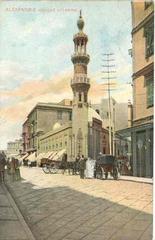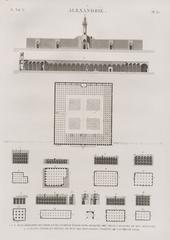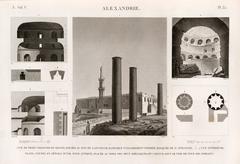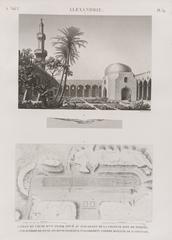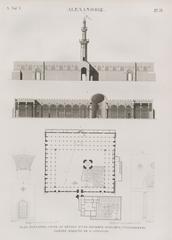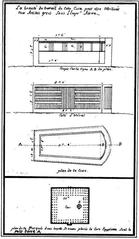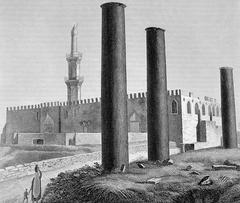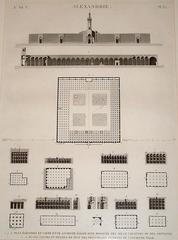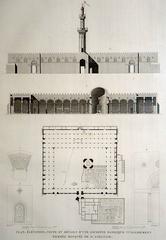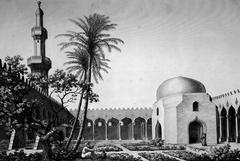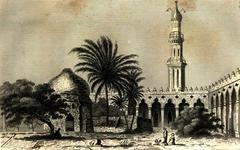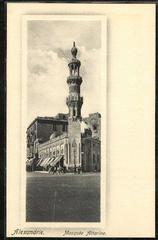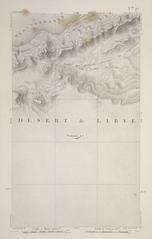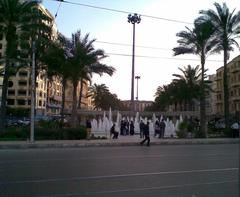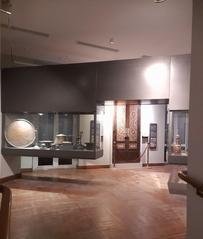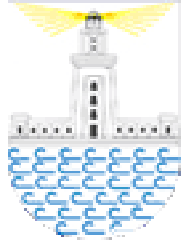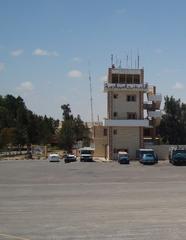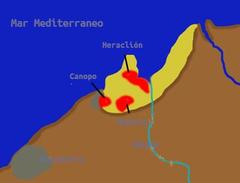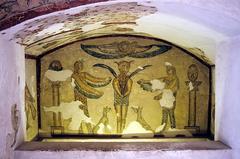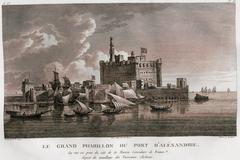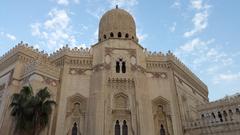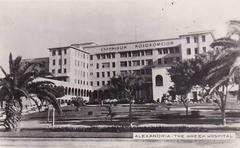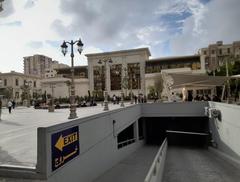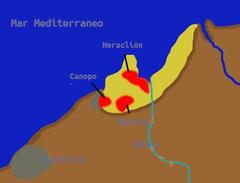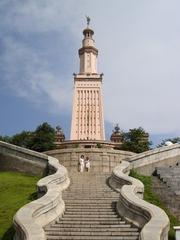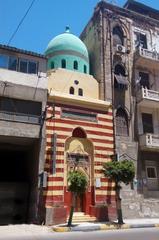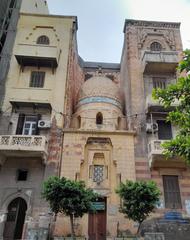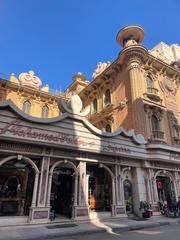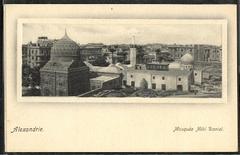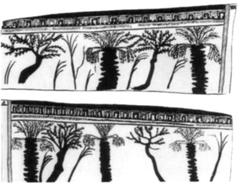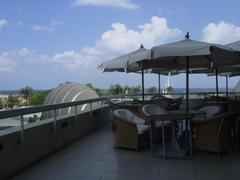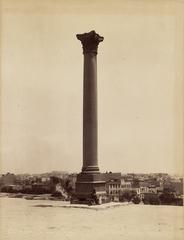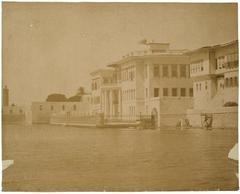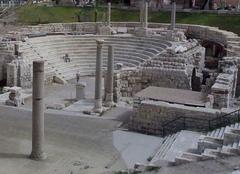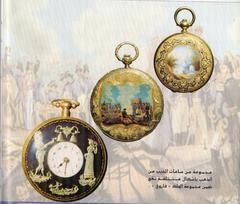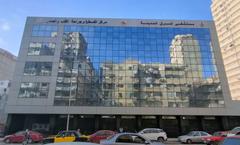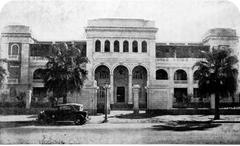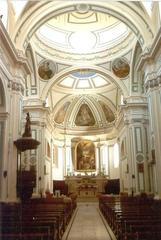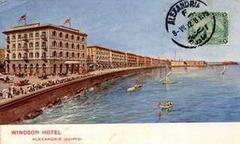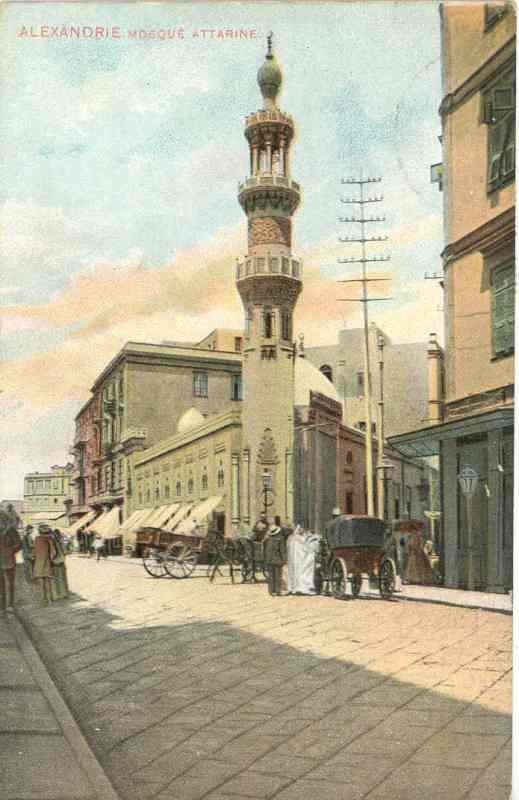
Attarine Mosque Alexandria: Visiting Hours, Tickets, and Comprehensive Guide
Date: 14/06/2025
Introduction
The Attarine Mosque in Alexandria, Egypt, stands as a living testament to the city’s layered religious and architectural history. Located in the bustling Attarine district, the mosque is not only an active place of worship but also a monument reflecting over a millennium of transformation—from a late Roman church to a remarkable example of Islamic architecture. This guide details the mosque’s historical significance, architectural evolution, practical visitor information, and tips for exploring both the mosque and the vibrant Attarine district.
For further historical and architectural context, see Islamic Architectural Heritage, archiqoo.com, and Muslim Solo Travel.
Historical Overview and Architectural Evolution
From Church to Mosque: Early Origins
The site of the Attarine Mosque originally housed a Christian church, likely dedicated to St. Athanasius or St. Alexander, dating back to the 4th century AD. After the Arab conquest of Egypt in the 7th century, the church was converted into a mosque, marking Alexandria’s religious transformation from its Christian Byzantine past to an Islamic future (Scribd).
Fatimid and Mamluk Periods: Renovation and Expansion
Significant renovations under the Fatimid vizier Badr El Gamaly in 1057 CE transformed the mosque’s layout, incorporating a hypostyle prayer hall, central courtyard, and minaret—hallmarks of Islamic architecture (Islamic Architectural Heritage). The Mamluks further modified the mosque in the 14th century, adding decorative and structural enhancements.
Modern Restoration
In 1901, Khedive Abbas II oversaw a major restoration, stabilizing the structure and introducing features that blend traditional Islamic motifs with early 20th-century construction, while preserving medieval elements such as the Fatimid-era stone inscription (Islamic Architectural Heritage).
Architectural Features and Design Elements
Layout and Structure
The mosque’s architectural plan retains traces of its basilica origins, with a rectangular nave and side aisles, an unusual feature among Egyptian mosques (Scribd). The hypostyle hall is supported by columns—many repurposed from Roman or Byzantine structures—while arcades and a central courtyard create a spacious, luminous interior.
Minaret, Dome, and Decorative Highlights
The brick minaret, added after the church’s conversion, serves as a visual landmark and focal point for the call to prayer. The dome, likely enhanced during the mosque’s various restorations, and the mihrab are adorned with Islamic geometric patterns, calligraphy, and remnants of Christian stonework, echoing the site’s layered history (archiqoo.com).
Spiritual and Cultural Spaces
A mausoleum for Muhammad ibn Sulayman, a descendant of Khalid ibn al-Walid, is accessed via the eastern entrance, reflecting the mosque’s continued religious significance (Wikipedia). The southern side houses small shops whose proceeds support mosque maintenance.
Cultural and Community Role
Religious and Social Importance
The Attarine Mosque’s continuous use for worship, education, and community gatherings illustrates its central role in Alexandria’s spiritual and civic life (hurghadalovers.com). Historically, it has also been a hub for Quranic schools and charitable activities.
District Identity
Located in the heart of the Attarine district—named after spice dealers— the mosque is integrated into the local cultural and commercial landscape, surrounded by souks, antique shops, and markets that evoke Alexandria’s cosmopolitan spirit (wefreespirits.com).
Visiting the Attarine Mosque: Practical Information
Visiting Hours
- Regular Hours: Open daily from 8:00 AM to 6:00 PM.
- Prayer Times: Access for non-Muslims may be restricted during prayer, especially on Fridays (main congregational day).
- Holidays: Hours may vary during religious festivals; check locally for updates.
Tickets and Entry
- Admission: Free for all visitors; donations for upkeep are appreciated.
- Dress Code: Modest attire is required. Women should cover hair, arms, and legs; men should avoid shorts and sleeveless shirts. Scarves are often available at the entrance (Top Ten Egypt).
- Shoes: Remove shoes before entering the prayer hall.
Accessibility
- Mobility: The mosque is on ground level, but surrounding streets are narrow and uneven, potentially challenging for wheelchair users or those with mobility concerns. Some tour operators offer accessible tours; contact in advance (Cairo Top Tours).
- Guided Tours: Many city tours include the mosque; inquire at local agencies.
Photography and Etiquette
- Photography: Permitted in many areas, but always ask before photographing inside the mosque or during worship (Top Ten Egypt).
- Conduct: Maintain silence, set phones to silent, and be respectful during religious activities.
Exploring the Attarine District
Souk El-Attarine
Directly adjacent to the mosque, this lively market is famous for spices, perfumes, antiques, and traditional crafts. Open daily from around 9:00 AM to 7:00 PM, it offers a vibrant local experience (thegoguy.com).
Nearby Attractions
- Roman Amphitheatre: Well-preserved ruins, open 8:00 AM to 5:00 PM.
- Alexandria National Museum: Exhibiting the city’s diverse history, open 9:00 AM to 5:00 PM.
- Bibliotheca Alexandrina: Modern library and cultural center, open 9:00 AM to 7:00 PM.
- Other Religious Sites: Abu al-Abbas al-Mursi Mosque, Saint Catherine Cathedral, and more (Egyptopia).
Getting There
- By Taxi/Public Transport: Central location with easy access from all parts of Alexandria.
- On Foot: The district is walkable, ideal for exploring markets and historic streets.
Visitor Experience: Tips and Recommendations
- Best Time to Visit: Mornings (for peace and cooler temperatures); avoid midday heat.
- What to Bring: Scarf (for women), water, easy-to-remove shoes, and a bag for footwear.
- Shopping and Dining: Explore the souk for souvenirs and enjoy local snacks from nearby cafes (thetouristchecklist.com).
- Safety: The area is generally safe; standard precautions apply.
Frequently Asked Questions (FAQ)
Q: What are Attarine Mosque visiting hours?
A: Open daily from 8:00 AM to 6:00 PM; access may be restricted during prayer times or religious events.
Q: Is there an entrance fee or ticket required?
A: No; entry is free, but donations are welcome.
Q: Is the mosque accessible for people with disabilities?
A: The mosque itself is ground-level, but surrounding streets may be challenging. Arrange accessible tours if needed.
Q: Can I take photos inside the mosque?
A: Photography is often allowed, but always ask for permission and avoid photographing worshippers.
Q: What should I wear?
A: Modest clothing; women should cover their hair, arms, and legs; men should avoid shorts and sleeveless shirts.
Visuals and Media Recommendations
For planning and inspiration, consult high-quality images and virtual tours available from Islamic Architectural Heritage and travel blogs. Use descriptive alt tags like “Attarine Mosque Alexandria historical site” for images.
Internal Links
Conclusion and Call to Action
The Attarine Mosque is a cornerstone of Alexandria’s historical and cultural landscape, inviting visitors to explore its unique blend of Christian and Islamic architectural heritage. By observing local customs, planning your visit during appropriate hours, and embracing the vibrant Attarine district, you’ll experience one of Egypt’s most treasured sites. Download the Audiala app for the latest visitor updates, guided tour options, and more tips on exploring Alexandria. Follow us on social media for travel inspiration and practical advice.
Sources and Further Reading
- Islamic Architectural Heritage
- The Attarine Mosque in Alexandria, Egypt – Scribd
- Attarine Mosque Alexandria – archiqoo.com
- Mosques in Alexandria, Egypt – hurghadalovers.com
- Things to Do in Alexandria Egypt – wefreespirits.com
- Solo Day Trip to Alexandria – Muslim Solo Travel
- El Attarine Mosque Al Juyushi in Egypt – Top Ten Egypt
- El Attarine Mosque in Alexandria – Egyptopia
- Things to Do in Alexandria Egypt – Wide World Trips
- El Attarine Mosque, Alexandria Attractions – Cairo Top Tours
- 25 Best Things to Do in Alexandria – thegoguy.com
- Things to Do in Alexandria Egypt – thetouristchecklist.com
